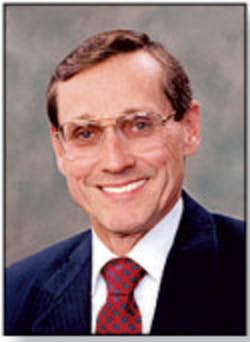Chip designers continually are pushing ever upward the speed envelope that embodies today's complex, high-frequency devices. ICs operating in the multigigahertz realm can be found in a host of products from commercial to consumer including industrial computers and cell phones. As the quest for speed advances unabated for these devices, connecting one to another greatly decreases the reliability, not to mention the operation, of the overall system. It goes without saying that interconnects are the weakest links in any electronic product. Eliminating the wires or traces that snake in every direction among the devices would be a panacea for the electronics industry.
Well, it seems that the demise of physical interconnects may become a reality in the not-too-distant future. Just consider the pioneering work that Robert Drost, principle investigator at Sun Microsystems is involved in that could be implemented in tomorrow's supercomputers. Drost's method utilizes wireless chip-to-chip communications rather than hard-wired interconnects. For closely spaced devices, when a bit in one device, say, goes from a 1 to a 0, the change in the electric field surrounding the devices is sensed by the other device, and it likewise changes states. Hundreds of devices could communicate over wireless interconnects, enabling a many-fold speed increase over today's wired technology.
Mr. Drost is one of a hundred individuals in this year's MIT Technology Review list of the top innovators under the age of 35. In its fourth year, the TR100 honors young innovators from around the world who are actively contributing to advances in technology in a variety of disciplines. This year's TR100 best and brightest innovators come from academia, comprising professors and research fellows, and from industry where one quarter of them are company founders or cofounders. Honorees chosen for the MIT TR100 list were culled from a group of more than 600 nominees and selected by a panel of judges and the editors of the Technology Review.
As you might expect, one individual from the TR100 was chosen as Innovator of the Year. That honor went to Scott Heiferman, 32, cofounder and CEO of Meetup.com, a website dedicated to fostering interpersonal relationships through the Internet. According to a recent Technology Review article, Mr. Heiferman said his website is dedicated to going online to go offline.• Meetup.com is designed to help people with common interests get together as a community. Mr. Heiferman wants to use technology to bring back some of the human-to-human interactions that have fallen by the wayside with the disappearance of many local social groups such as the Elks Clubs and bowling leagues.•
You may remember that supporters of presidential hopeful Howard Dean used the Internet to plan and organize their activities during the initial phases of his campaign. These supporters, said to be about 190,000 leading up to the Iowa caucuses, communicated via Meetup.com and then presumably met in groups to discuss tactics, indicating how the website was able to bring together large numbers of people with like interests.
What prompted the judges to single out Heiferman for the top award was the genuinely disruptive nature of his innovation. His website allows visitors to organize themselves around any topic that interests them. People in a local area can set up meetings for face-to-face discussions.
Members of the TR100 should be congratulated on their accomplishments. Honoring such innovators sets an example for other technologists to strive for recognition in their respective fields.
Paul Milo
Editor
[email protected]

